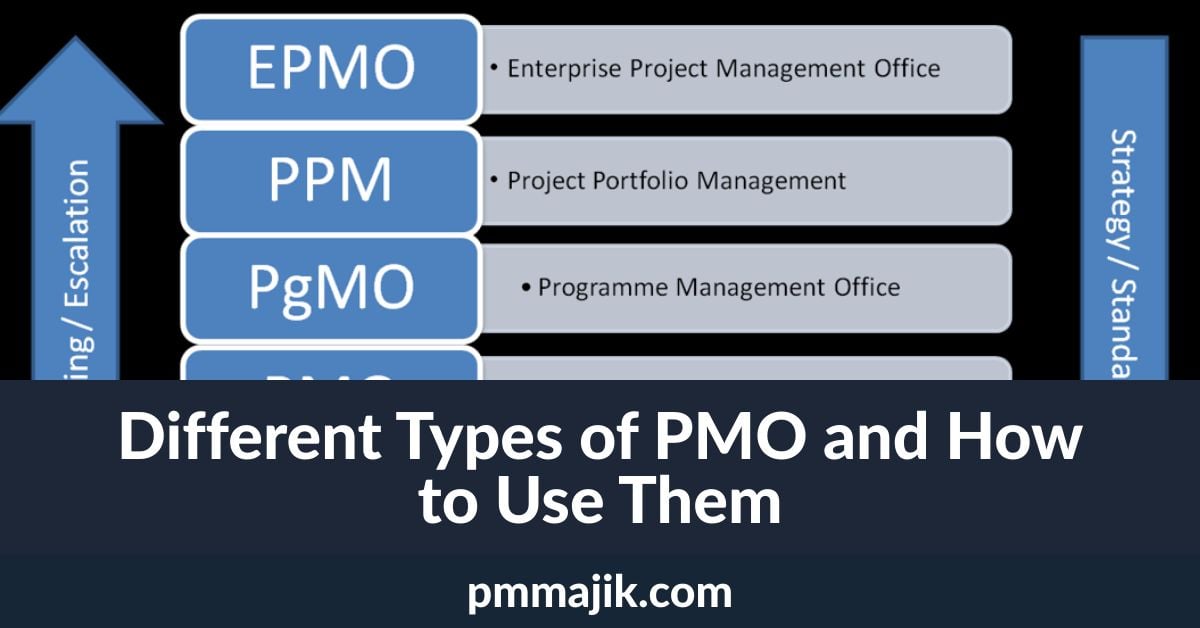Knowing the different types of project management office (PMO) and how to use them can help when you’re reorganising or planning a new office. There are quite a few different ideas about what a PMO can be and how projects interact with them so we’re going to explore them.
When you decide it’s time to restructure or change your PMO, you need to figure out how it’s going to change; what will it look like after the reorganisation? Similarly, when setting up a new office, you need to know what type of office to set up.
Here, we’re going to look at the most common types of PMO briefly and dive into the structures, pros, and cons of them in future posts.
The traditional type of PMO
Tradition for tradition’s sake isn’t great business practice, but there’s also nothing wrong with keeping your PMO doing what PMOs usually do. A traditional PMO normally is there to offer support to project managers whilst ensuring deliverables are met.
There may also be an element of stakeholder engagement for a traditional PMO. If you find yourself monitoring dashboards and producing new templates and processes, your likely in a rather traditional PMO.
Business or enterprise PMOs
Sometimes pitted as the opposite to a traditional PMO, the enterprise PMO is more aligned with the strategic aims of the business it operates in. The end result is usually the return on investment into each project and the office may even be tasked with commissioning, or at least pitching projects.
Where a traditional PMO ensures a project functions well, an enterprise PMO will focus on outcomes and how the business is affected. You may recognise characteristics of delivery and supportive PMOs in this style of office.
The supportive PMO type
As the name suggests, a supportive PMO is there to offer support and guidance to the projects that run within a business. This type of PMO offers on demand resources and expertise to project managers.
Think of a supportive PMO like a centre of excellence for running and managing projects. It produces templates, designs processes, and communicates best practices across projects. It doesn’t really control or set tasks for the project managers under it, focussing instead on helping them in whatever form is needed.
A directive PMO
A directive PMO is there to provide resources to projects. This could be in terms of:
- Budget
- Talent
- Hardware
- Feedback
- Tools
In this style of office, there is a pool of well-trained, expert project leaders who are assigned to a project when it’s committed, ensuring expert management within a prescribed framework. This approach for a PMO should ensure consistency of deliverables since projects are directed from one office.
A delivery PMO structure
In a delivery PMO, it’s all about the tactical execution of the projects under your remit. The office will pay close attention to project outcomes and provide the tools that managers need to get the job done.
This PMO works to build processes around past successes, analysing data to understand what has worked to drive success. The primary goal of a delivery PMO, unsurprisingly, is to get projects across the line and have them hit the targets set out.
Compliance PMOs
Compliance PMOs can also be called a controlling PMO – the language you choose will depend on how you want the office to be perceived by people in the organisation. The function is to bring projects into line and have them follow a tightly controlled set of procedures.
Methodologies will be harmonised, documentation gets standardised, and conformance and adherence to procedures are the focusses of the PMO team. This type of PMO is usually used when project have historically got out of control and may breed resentment in managers. Because of this, a compliance PMO will need high level support from the C-suite to complete its goals.
The take home
Your PMO doesn’t have to fit neatly into any one type or style of office. This collection of different types of PMO and how to use them is here as inspiration, serving to help you plan what you PMO can look like and the roles it’s able to fulfil.
The PMO landscape is constantly evolving, there is no right or wrong answer. It is about taking components from different approaches that are best placed to achieve the outcome that your are looking for.
It is worth taking a look at the following that provide further thoughts on different PMO structures:





